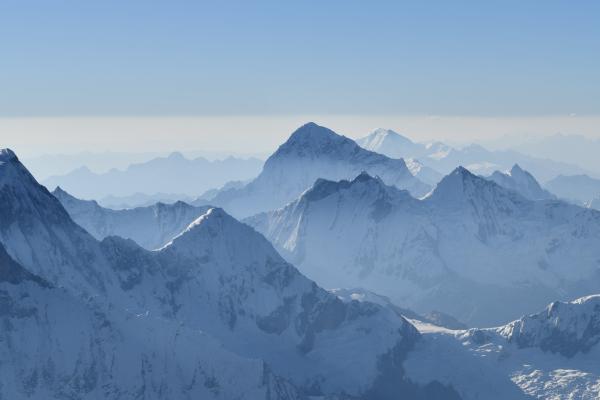The Impact on Radiative Forcing: Biomass Burning Leads to Black Carbon Deposition on Andean Glaciers

In a recent collaborative study published in Environmental Research Letters from IOP Science, a team of researchers investigated the impact of black carbon (BC) deposition on the melting of Andean glaciers in South America. Co-authors of the study included The Ohio State University's Byrd Center Senior Research Associate Emilie Beaudon and Distinguished University Professor of Earth Sciences and Byrd Center Senior Research Scientist Lonnie Thompson.
The Andean glaciers have experienced rapid melting since the 1960s, and while anthropogenic climate change is considered a significant factor, the deposition of light-absorbing particles like BC may also play a role. The researchers hypothesize that BC from fires in the Amazon Basin and other sources may be deposited on the glaciers, reducing their surface albedo and causing further melting.
The study combined atmospheric chemistry modeling with BC observations in snow or ice at several mountain sites in Peru and Bolivia. The results showed that the simulated BC concentrations were consistent with the observed concentrations, with smoke from fires accounting for a significant portion of the BC deposition fluxes. Using a snow albedo model, the study estimated the radiative forcing and albedo reductions caused by smoke BC deposition on the glaciers. The findings suggested that the deposition of smoke BC alone can lead to a climate impact, with potential radiative forcing ranging from +0.1 to +3.2 W m−2 and corresponding average albedo reductions of 0.04% to 1.1%.
Radiative forcing is a critical concept that sheds light on the mechanisms behind climate change. It refers to the imbalance between the amount of energy entering and leaving Earth's atmosphere. Energy is transmitted through radiation, with solar radiation coming from the sun and infrared radiation being emitted as heat. In the present scenario, more radiation enters our planet's atmosphere than the amount leaving. As a result, the atmosphere becomes warmer, contributing to the observed phenomenon of global warming. The implications of radiative forcing are far-reaching and can lead to shifts in temperature patterns, weather events, and other climate-related phenomena.
The study highlights the increasing number of fires in the Amazon Basin since 2013 and their potential influence on regional climate. Smoke from these fires, including BC, can travel over the Andes and affect the glaciers. The melting of Andean glaciers has significant implications for the region, including impacts on water resources, agriculture, and human settlements.
The research emphasizes the need to quantify how BC deposition affects glacial melting in South America. While previous studies have shown the impact of BC deposition on snow albedo in other regions, the specific influence on Andean glaciers has yet to be well quantified. The study calls for further research using more comprehensive climate models to assess the long-term climate impacts of BC deposition and consider other factors, such as dust deposition.
The study concludes by suggesting that adhering to policies that protect forests and reduce deforestation, like those implemented in Brazil recently, could help limit BC deposition on Andean glaciers and mitigate their risk of disappearance.
Read more by visiting the online publication or download the PDF here.
Image courtesy of Dr. Lonnie Thompson- Smoke in the Cordillera Blanca from the Ice Core Paleoclimatology Group's Huascaran Summit drill site in 2019 shows the lower elevation of Amazon smoke and the peaks punching to the clear mid-tropospheric air above.
